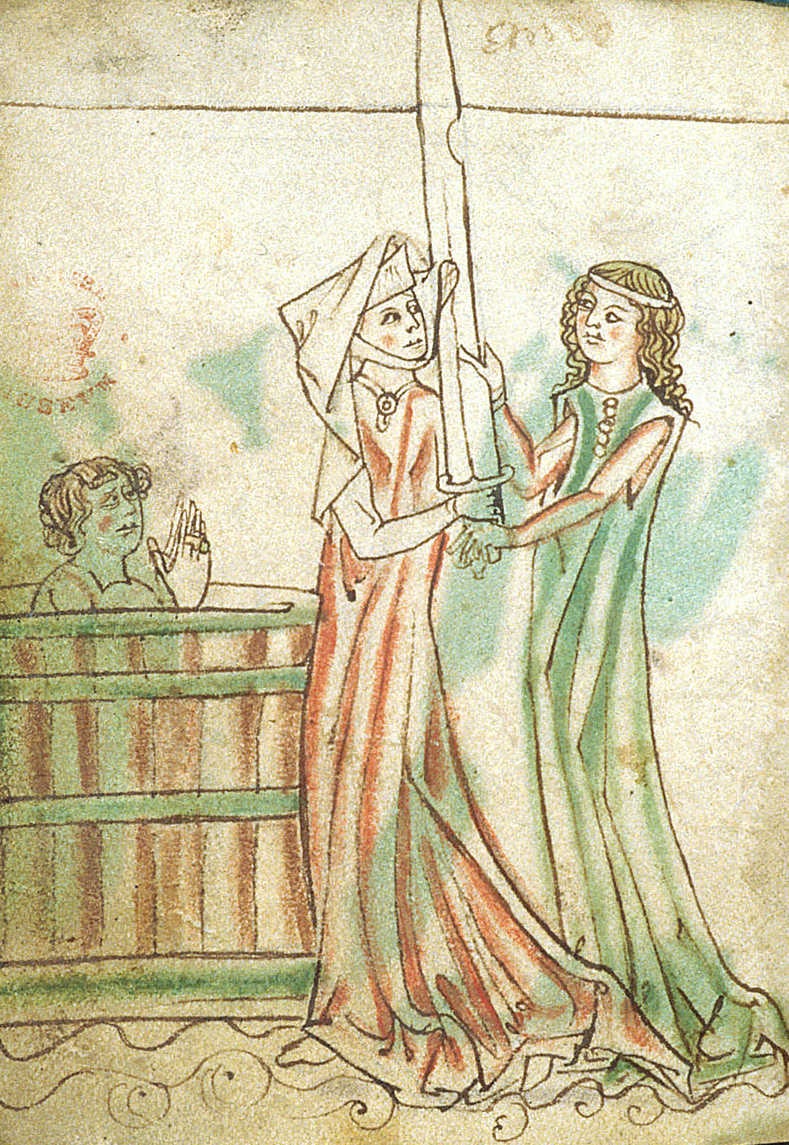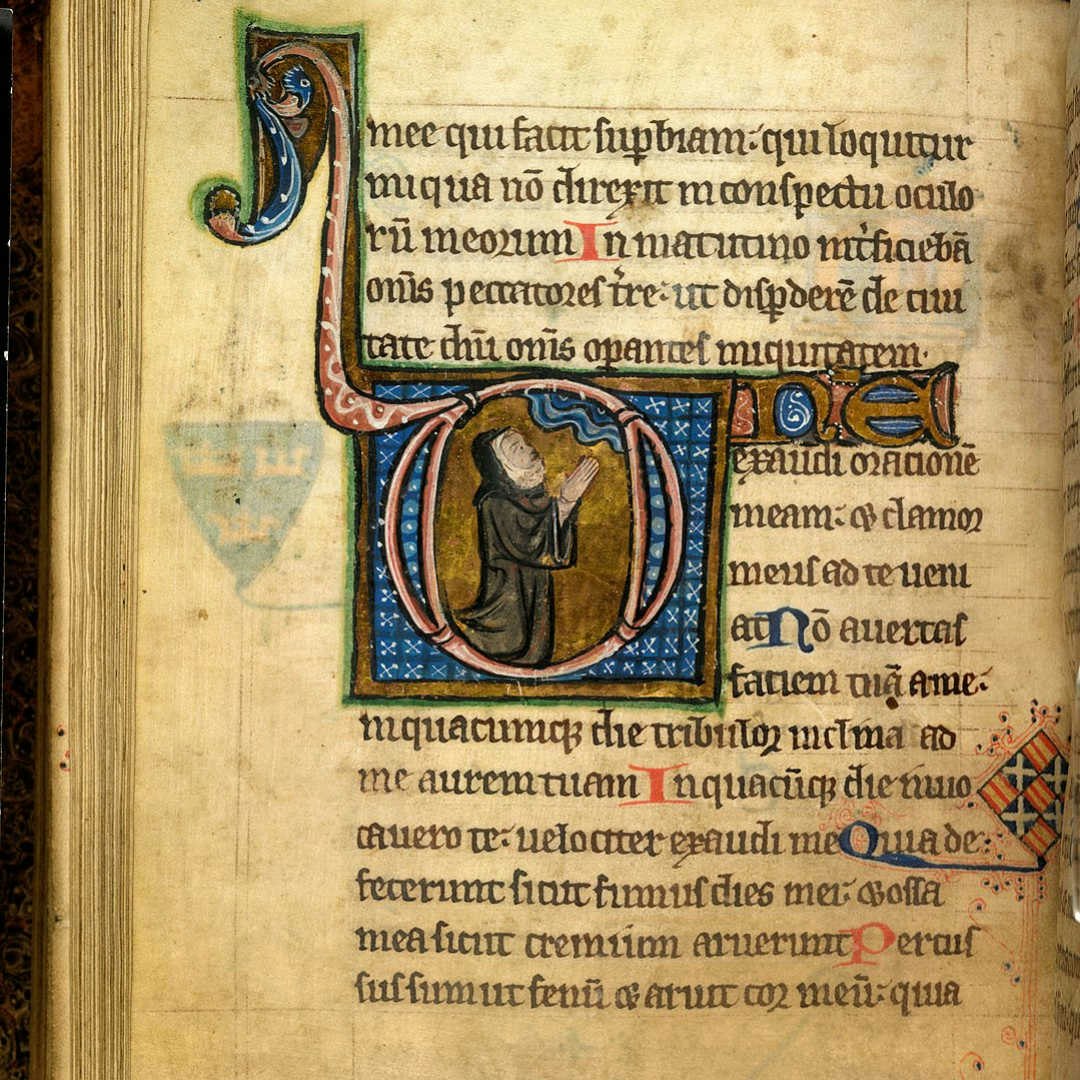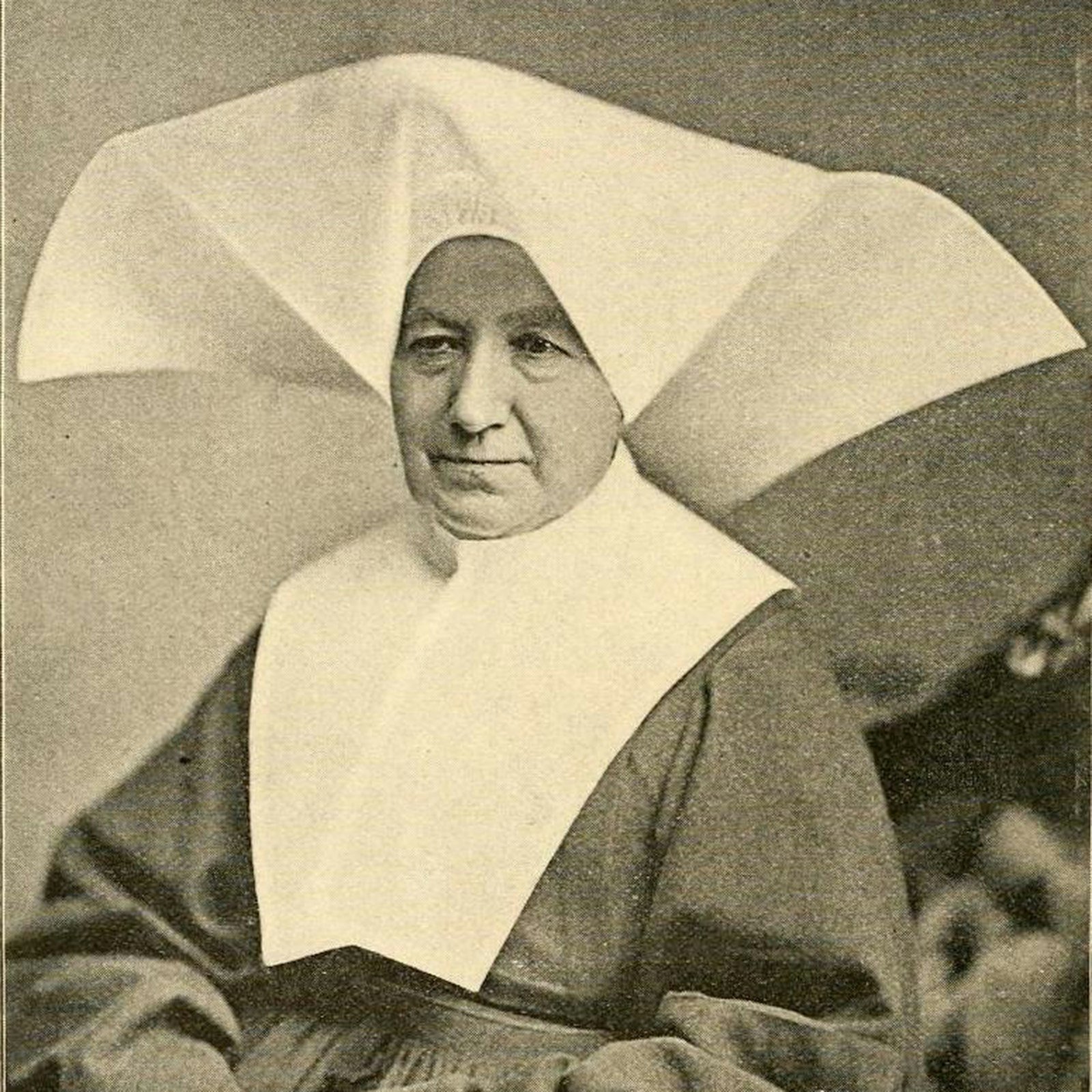Recently while reading Tomie dePaola’s book Strega Nona to my son, I noticed something for the first time. Most of the women in the illustrations were wearing cloths that covered the head and went around the neck and chin, similar to a nun’s wimple or a hijab. I know I’ve seen these headcoverings before—I did study Medieval history, after all—but I’d never really thought about them until I saw them so lovingly illustrated in a children’s book.
Naturally my impulse as a former historian was to go out and start researching. It turns out that my first instinct to liken the headdresses to wimples and hijabs was right on the money. When European soldiers came back from the Middle East during the Crusades they brought the hijab back with them. The hijab morphed into the wimple as it was adopted by European women as a fashion necessity. During that time period married women were expected to cover their hair as a sign of modesty. The wimple allowed women to cover their hair, neck, and even part of their face if they so desired as a way to demonstrate their respectability.
Of course, as is often the case, though originally adopted for reasons of modesty, the wimple also became a way to showcase wealth with jeweled closures or crownlike metal circlets worn on the head. The Wife of Bath was described as wearing a wimple in Chaucer’s Canterbury Tales quite possibly to highlight the fact that while she was considered licentious for her time having been married multiple times, she still viewed herself as a respectable woman.

In this image from a manuscript illustrating the love story of Tristaan and Isolde, Isolde is seen wearing a wimple as she examines a sword. The image is either English or French and from the mid- to late-13th century. Image courtesy of the British Library.
Wimples were made from a wide variety of fabrics. Poorer women probably would make do with coarsely woven, undyed wool or linen, Although this might not sound to pleasant at first, wimples like this did have the benefit of protecting these women from the elements while they worked outside. (Something upper-class women didn’t need to worry about.) Women of means might have had their wimples made from fine silks and in some cases they were so finely woven as to be gauzelike. They also took many forms which you can read about here, along with descriptions of other popular Medieval headgear for women. Wimples were overwhelmingly white, although there are some descriptions of wimples dyed with saffron. I couldn’t find any evidence of lace wimples or wimples decorated with embroidery so even the most expensive of wimples were probably rather plain, at least as plain as finely woven silk can ever be.

A nun is depicted wearing a wimple with a black headdress overtop in this English Psalter from the mid- to late-13th century. Nuns were some of the few women who continued to wear wimples after the 15th century. Image courtesy of the British Library.
Eventually the wimple fell out of favor. Around 1500 Italian women began to favor elaborate braids that they couldn’t show off if they were wearing a wimple. Slowly wimples were abandoned by most women. Nuns, of course, kept on wearing wimples as they fit their need for modest covering of their head and neck. Today, most folks (including me) probably associate the word most with nuns and with nurses. Wimples also evolved over time and took many different forms. Today if you were to search for “wimple” you’d find many variations, from the original hijab-inspired head and neck covering to the more elaborate cornette which was of course most famously worn by Sally Field in The Flying Nun.
From the Chaucer to popular television, the wimple certainly has come a long way.
--Christina
Posted October 25, 2019 Revised June 15, 2022

